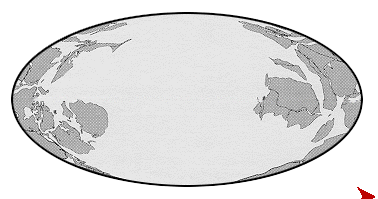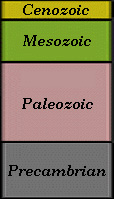
"Plate tectonics" is the theory that the upper layer of earth's crust, the lithosphere, is broken into many pieces and they move around on top of the asthenoshpere, the next layer down. We find evidence of this in how the coastlines of continents seem to line up (Africa to South America, for example), and animal similarities between locations that are now separated by oceans. There is also fossil evidence to support this theory, and evidence of ancient climates and rock formations all lead us to believe that this is how it works.
Ways to support the theory of plate tectonics include the age of rocks in the sea floor. Rocks along the mid-Atlantic ridge are relatively young, supporting the sea floor spreading idea, which suggests that new crust is being formed along the ridge, and that is pushing older rocks outward. Also in support of this idea is the magnetism of rocks in the Atlanic sea floor. They show that the magnetism of earthÍs poles has switched many times over the course of its history, and bands of different magnetism indicate that, with bands at equal distance from the ridge showing the same polarity. Also, it appears Africa is breaking up, indicated by the Rift valleys.
Penguins are animals suited for cold regions. When Africa and South America (then conjoined) were the souhernmost regions, penguins lived their. When the movement of plates caused the earth to look similar to how it does today, penguins moved south, to what is now oceana, and Antarctica. Over the course of time penguins either moved to Antarctica or died, as there are no longer penguins anywhere on earth except Antarctica. There are, however, fossils of penguins from other regions: 4 species in Australia, 9 in South America, 14 in New Zealand, 6 on Seymour Island, and 1 in South Africa. This data not only tells us where they were found, but also that these regions were probably connected a long time ago, because penguins prabably could not swim across the Atlantic ocean from Africa to South America.
Antarctica was mostly underwater in the paleozoic era. What we know of today as Africa, South America, and Australia were together as one continent, and lay farther south than they do today. Populations of trilobites and graptolites rose and died off during this era, and we are not sure why they became extinct. Trilobites seem to be well adapted for living in most kinds of environments, so it is strange that they disappeared. Antarctica became an above-water land mass during the mesozoic period. It was smaller than it is today and was still connected to the rest of Pangea. Also in the mesozoic, we find dinosaurs. Nobody really knows why dinosaurs dissapeared. It was possibly due to dust in the atmosphere from volcanoes or a meteor impact.
Plate tectonics affected the evolution of Penguins a lot, because if the areas where penguins lived moved to a warmer spot on earth, and penguins survived the climate change, they might have evolved into totally different animals. Also, if Antarctica had never emerged from the ocean, we might find penguins in South America, Africa, Australia, and New Zealand. There are an unlimited number of possible outcomes to this equation, but I think penguins are cool just how they turned out.
back to toc



